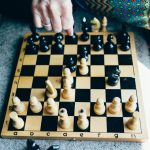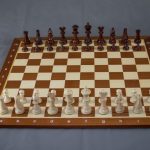Download links
How to install Mastering the Art of Basketball: Tips for Improving Your Game APK?
1. Tap the downloaded Mastering the Art of Basketball: Tips for Improving Your Game APK file.
2. Touch install.
3. Follow the steps on the screen.
Description
Ball handling is a fundamental skill that every basketball player must master to excel on the court. It encompasses a variety of techniques that allow players to control the ball effectively while navigating through defenders. One of the most essential aspects of ball handling is dribbling, which involves bouncing the ball while moving.
Players should practice different dribbling styles, such as the crossover, behind-the-back, and between-the-legs dribbles. Each of these techniques serves a specific purpose; for instance, the crossover dribble can be used to change direction quickly and shake off a defender, while the behind-the-back dribble can create space and protect the ball from an opponent. In addition to dribbling, players must also develop their hand-eye coordination and ball control.
This can be achieved through various drills, such as stationary dribbling exercises where players focus on using one hand at a time. As players become more comfortable with the ball, they can incorporate movement into their drills, practicing dribbling while running or changing speeds. Another critical aspect of ball handling is the ability to protect the ball from defenders.
Players should learn to use their body as a shield, positioning themselves between the defender and the ball while maintaining control. Mastering these techniques not only enhances a player’s individual skills but also contributes to overall team performance.
Key Takeaways
- Proper hand placement and finger control are essential for effective ball handling techniques.
- Shooting fundamentals include proper footwork, hand placement, and follow-through for consistent and accurate shots.
- Defensive strategies involve maintaining proper positioning, active hands, and quick footwork to disrupt the opponent’s offense.
- Rebounding skills require anticipation, positioning, and relentless pursuit of the ball.
- Physical conditioning and fitness are crucial for endurance, agility, and injury prevention on the basketball court.
- Mental toughness and focus are necessary for overcoming adversity and maintaining composure during high-pressure situations.
- Teamwork and communication are vital for coordinating plays, providing support, and maximizing the team’s overall performance.
- Game strategy and basketball IQ involve understanding the opponent’s tendencies, exploiting weaknesses, and making smart decisions on the court.
Shooting Fundamentals
Shooting is often regarded as one of the most critical skills in basketball, as it directly impacts a team’s ability to score points. The foundation of effective shooting lies in proper technique, which includes stance, grip, and follow-through. A player’s shooting stance should be balanced and stable, with feet shoulder-width apart and knees slightly bent.
This position allows for better weight transfer during the shot. The grip on the basketball is equally important; players should hold the ball lightly with their fingertips while keeping their shooting hand under the ball for support. Once a player has established a solid stance and grip, they must focus on their shooting motion.
The shot should be initiated from the legs, with energy transferred upward through the body. As the player rises for the shot, their shooting arm should extend fully, releasing the ball at the peak of their jump. The follow-through is crucial; players should maintain their shooting hand’s position after releasing the ball, ensuring that their wrist is relaxed and fingers are pointed toward the basket.
Practicing shooting from various spots on the court, including free throws, mid-range shots, and three-pointers, helps players develop consistency and confidence in their shooting abilities.
Defensive Strategies

Defensive strategies are essential for any basketball team aiming to limit their opponent’s scoring opportunities. A strong defense can disrupt an opponent’s rhythm and create turnovers, leading to fast-break opportunities for the offense. One fundamental defensive strategy is man-to-man defense, where each player is responsible for guarding a specific opponent.
This approach requires players to stay close to their assigned adversaries while anticipating their movements and potential scoring opportunities. Effective communication among teammates is vital in man-to-man defense, as players must call out screens and switches to maintain defensive integrity. Another common defensive strategy is zone defense, which involves players covering specific areas of the court rather than individual opponents.
This approach can be particularly effective against teams that rely heavily on outside shooting or have a dominant inside presence. In a zone defense, players must be aware of their positioning and work together to close passing lanes and contest shots. For example, a 2-3 zone places two players near the perimeter and three in the paint, creating a formidable barrier against inside scoring while still being able to contest outside shots.
Understanding when to employ different defensive strategies based on an opponent’s strengths and weaknesses is crucial for any successful basketball team.
Rebounding Skills
| Player | Defensive Rebounds | Offensive Rebounds | Total Rebounds |
|---|---|---|---|
| LeBron James | 7.8 | 1.2 | 9.0 |
| Giannis Antetokounmpo | 10.3 | 2.0 | 12.3 |
| Anthony Davis | 8.7 | 2.3 | 11.0 |
Rebounding is a critical aspect of basketball that often goes unnoticed but can significantly influence the outcome of a game. Securing rebounds allows teams to gain possession of the ball and create additional scoring opportunities. There are two primary types of rebounds: offensive and defensive.
Offensive rebounds occur when a player retrieves the ball after a missed shot by their team, while defensive rebounds happen when a player secures the ball after an opponent’s missed shot. Both types require different skills and techniques. To excel at rebounding, players must develop strong positioning and timing skills.
Positioning involves anticipating where the ball will land after a missed shot and positioning oneself accordingly. Players should use their bodies to box out opponents by establishing a low center of gravity and using their hips to create space between themselves and their adversaries. Timing is equally important; players must jump at the right moment to secure the rebound before their opponents can react.
Practicing rebounding drills that emphasize boxing out and timing can help players improve their effectiveness on the boards.
Physical Conditioning and Fitness
Physical conditioning is an integral part of any basketball player’s development. The sport demands high levels of endurance, strength, agility, and flexibility. Players must engage in a well-rounded fitness regimen that includes cardiovascular training, strength training, and flexibility exercises.
Cardiovascular conditioning is essential for maintaining stamina throughout a game, allowing players to perform at their best during both offensive and defensive plays. Activities such as running, cycling, or interval training can help improve cardiovascular fitness. Strength training is equally important for basketball players, as it enhances overall performance and reduces the risk of injury.
Exercises that target key muscle groups used in basketball—such as squats for leg strength, core exercises for stability, and upper body workouts for shooting power—should be incorporated into a player’s training routine. Additionally, flexibility exercises like stretching or yoga can improve range of motion and prevent injuries caused by tight muscles. A comprehensive physical conditioning program tailored to a player’s specific needs will not only enhance performance but also contribute to longevity in their basketball career.
Mental Toughness and Focus

Mental toughness is often what separates good players from great ones in basketball. The ability to remain focused under pressure, maintain composure during challenging situations, and bounce back from setbacks is crucial for success on the court.
Techniques such as visualization can help players mentally prepare for games by imagining themselves executing plays successfully. Focus is another critical component of mental toughness. Players must learn to block out distractions—whether from fans, opponents, or even their own thoughts—to concentrate fully on the game at hand.
Mindfulness practices can aid in developing this focus; by training themselves to stay present in each moment during practice and games, players can enhance their performance significantly. Additionally, setting specific goals—both short-term and long-term—can provide motivation and direction for players striving to improve their skills and achieve success in basketball.
Teamwork and Communication
Basketball is inherently a team sport that relies heavily on effective teamwork and communication among players. Successful teams understand that individual talent must be complemented by collaboration to achieve victory. Players should develop strong relationships with their teammates both on and off the court; this camaraderie fosters trust and enhances communication during games.
Effective communication involves not only verbal cues but also non-verbal signals such as eye contact or hand gestures that indicate plays or defensive assignments. In-game communication is vital for executing strategies effectively; players must call out screens, switches, or defensive assignments clearly to ensure everyone is on the same page. Additionally, teamwork extends beyond just communication; it involves understanding each other’s strengths and weaknesses and leveraging them to create scoring opportunities or defensive stops.
Game Strategy and Basketball IQ
Understanding game strategy and developing basketball IQ are essential components of becoming a well-rounded player. Basketball IQ refers to a player’s ability to read the game—anticipating plays before they happen, recognizing patterns in opponents’ behavior, and making quick decisions based on situational awareness. Players with high basketball IQ can adapt their strategies mid-game based on how opponents are performing or how well their own team is executing plays.
Coaches often emphasize studying game film as a way for players to enhance their basketball IQ. By analyzing past games—both their own performances and those of opponents—players can identify strengths and weaknesses in various strategies. This knowledge allows them to make informed decisions during games about when to shoot, pass, or drive to the basket based on what they have observed in previous matchups.
Additionally, understanding offensive sets such as pick-and-rolls or isolation plays enables players to execute these strategies effectively while also recognizing when adjustments are necessary based on how defenses are responding. In conclusion, mastering these various aspects of basketball—from ball handling techniques to mental toughness—requires dedication and practice. Each skill contributes uniquely to a player’s overall performance on the court, emphasizing that success in basketball is not solely about individual talent but also about teamwork, strategy, and continuous improvement.
FAQs
What is basketball?
Basketball is a team sport in which two teams, typically consisting of five players each, compete to score points by shooting a ball through the opposing team’s hoop.
What are the basic rules of basketball?
The basic rules of basketball include dribbling the ball while moving, shooting the ball into the opposing team’s hoop, and playing defense to prevent the opposing team from scoring.
What equipment is needed to play basketball?
The main equipment needed to play basketball includes a basketball, a hoop, and a court with marked boundaries. Players also wear basketball shoes and may use other protective gear such as knee pads.
What are the positions in basketball?
The typical positions in basketball are point guard, shooting guard, small forward, power forward, and center. Each position has specific roles and responsibilities on the court.
What are the most important skills in basketball?
Some of the most important skills in basketball include shooting, dribbling, passing, rebounding, and playing defense. Agility, speed, and teamwork are also crucial for success in the sport.
How is basketball scored?
Points in basketball are scored by shooting the ball through the opposing team’s hoop. Different types of shots, such as layups, three-pointers, and free throws, are worth different numbers of points.
What are some famous basketball leagues and tournaments?
Some famous basketball leagues and tournaments include the National Basketball Association (NBA) in the United States, the EuroLeague in Europe, and the FIBA Basketball World Cup.
What are some famous basketball players?
Some famous basketball players include Michael Jordan, LeBron James, Kobe Bryant, Shaquille O’Neal, and Magic Johnson. These players have achieved great success and recognition in the sport.





